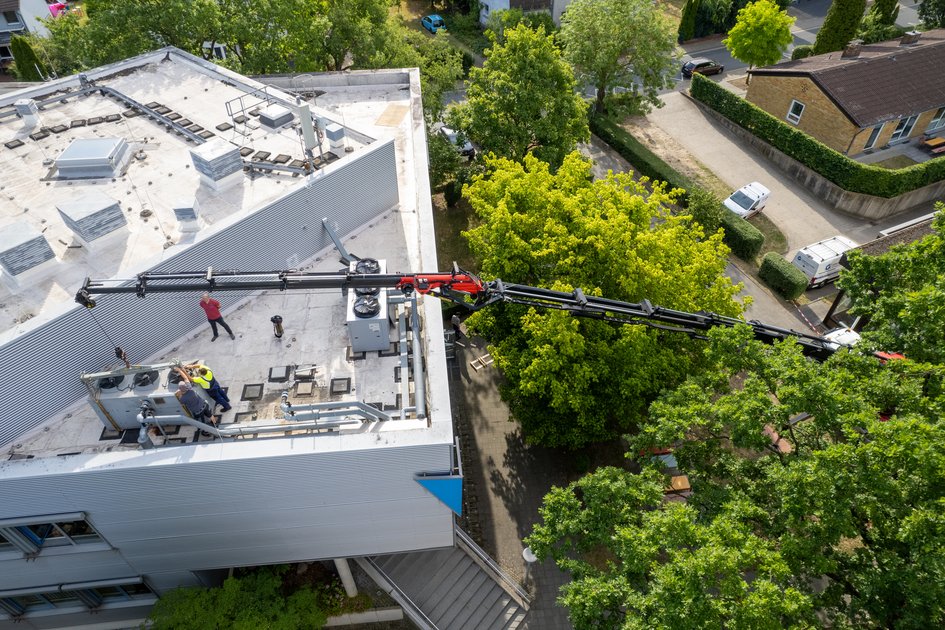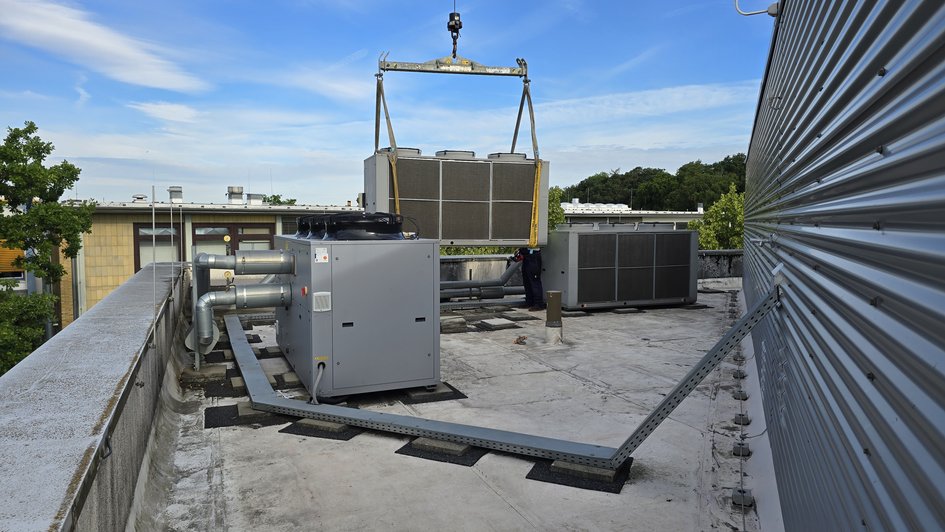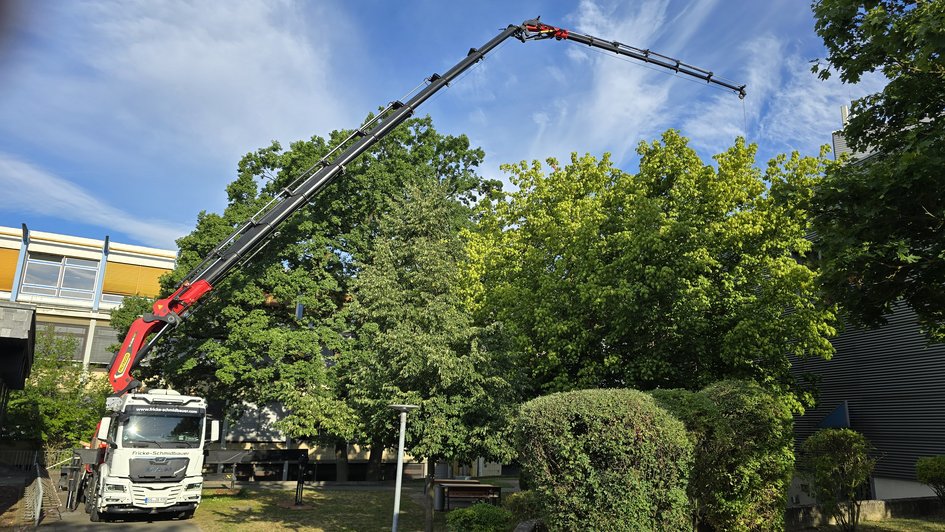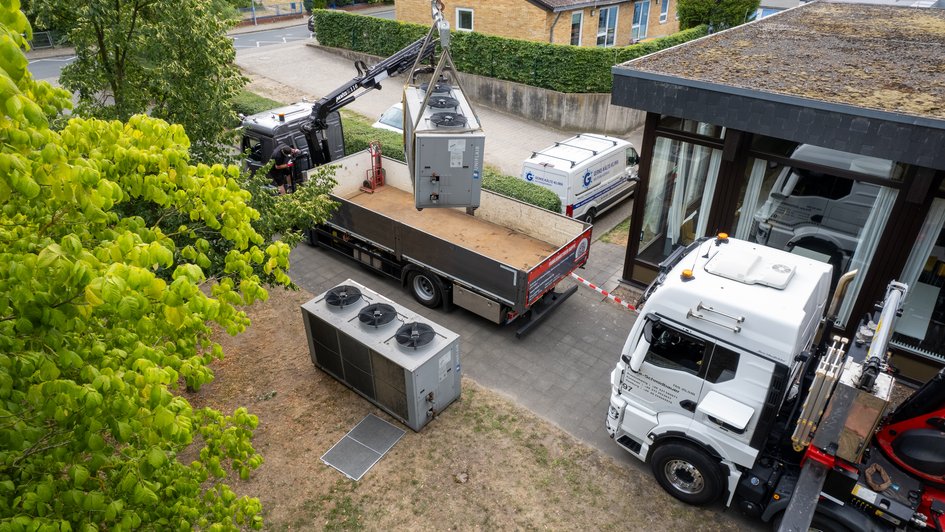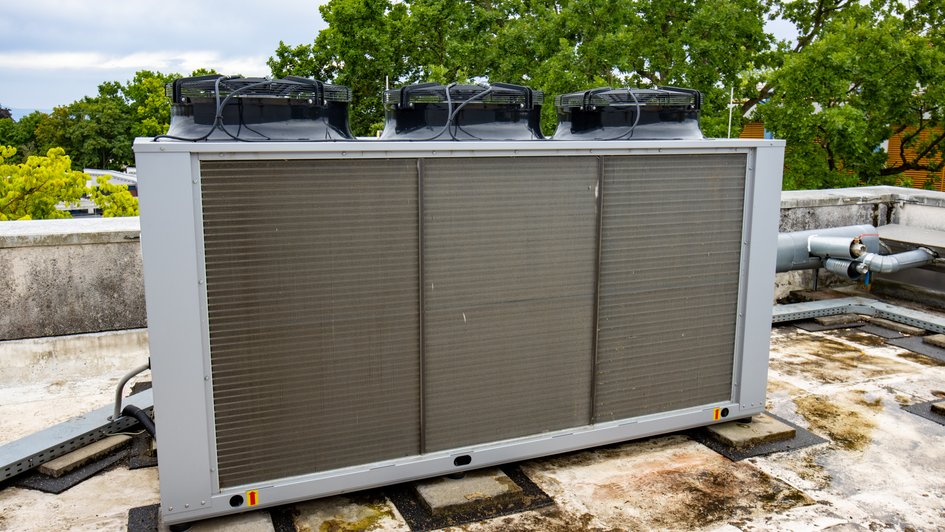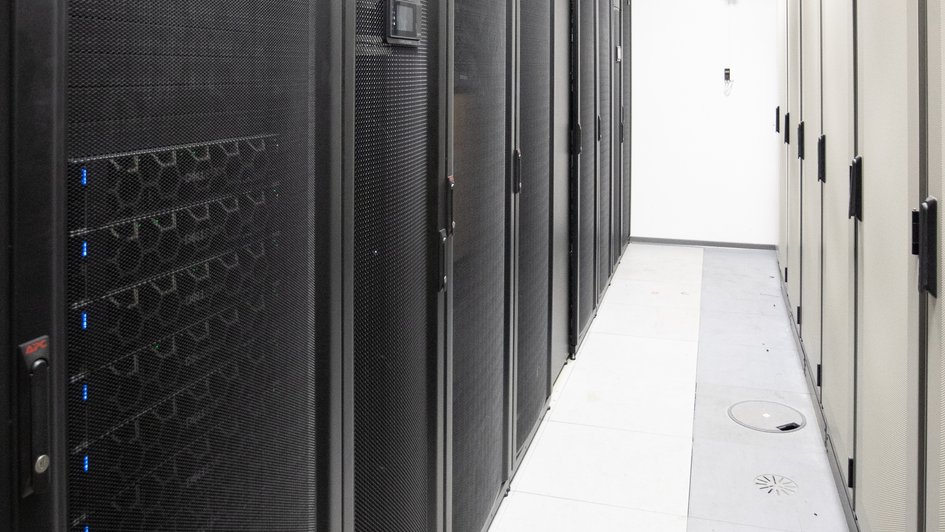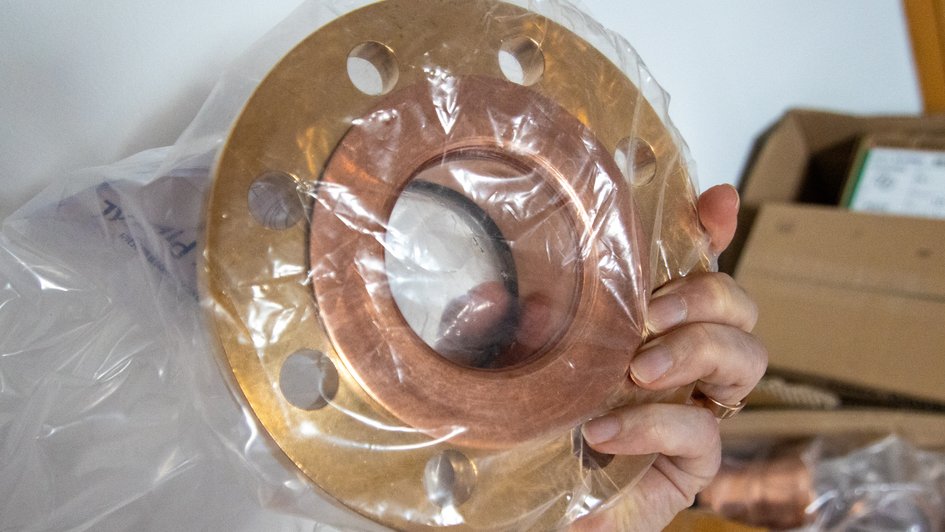A large mobile crane stands in front of the computer centre at Ostfalia University in Wolfenbüttel on Saturday morning. The boom can lift loads weighing up to 32 tonnes more than 30 metres high. In this respect, the task today is relatively easy: three old cooling systems have to be lifted off the roof of the computer centre and two new ones installed. They "only" weigh a good tonne each, but are 1.60 metres high, 2.80 metres wide and 1.20 metres long. The crane sets the new chillers down safely and precisely one after the other at a height of a good 20 metres.
Ostfalia data centre takes over IT services for other facilities
The crane installation is only the externally visible part of the extensive work that took place at the data centre over the weekend of 4 to 6 July. From 9 a.m. on Friday morning until just before midnight on Sunday evening, Ostfalia was virtually offline. The IT systems of the Braunschweig University of Art (HBK) and the Braunschweig State Museums as well as for the city of Wolfenbüttel, all schools in Wolfenbüttel and the Herzog August Library were also restricted. The Ostfalia computer centre provides various IT services for these institutions. Only the most important services such as the Ostfalia and HBK websites and the campus management system HisInONE were accessible; their servers had previously been outsourced to a server at Clausthal University of Technology.
Ostfalia renews the entire air conditioning technology of the computer centre
The reason for the work was an urgent need to renew the air conditioning technology in the computer centre. "Last year, two of the three old chillers failed in quick succession. That could have ended badly on hot summer days," says Dr Thorsten Ludewig, Head of the Ostfalia computer centre. The air conditioning technology dissipates heat via cooling water in pipes, which is generated during the operation of servers and IT equipment. In the chillers on the roof of the data centre, evaporators extract the heat and the colder water is fed back into the cooling circuit. "We have also renewed the entire pipework right up to the server room. The system now works much more efficiently than the old system. That's why we can manage with two chillers on the roof," explains Ludewig.
Special team effort by Ostfalia employees and external companies
The data centre had up to ten employees working in parallel over the weekend. As planned, they initially switched off 155 hardware servers and just over 1300 virtual servers on Friday. At seven o'clock on Saturday morning, the crane from Fricke-Schmidbauer arrived to lift the chillers onto the roof. The companies Wahl Elektro- und Informationstechnik, Gerke Kälte-Klima and Schneider Electric were also on site, each with several employees.
By around 4 p.m. on Sunday, the work had progressed so far that the data centre could be fully up and running again within eight hours. "A huge thank you goes to my team and everyone involved. We are pleased that everything went so well. Despite nine months of preparation, such work is always open-heart surgery," says Thorsten Ludewig.

